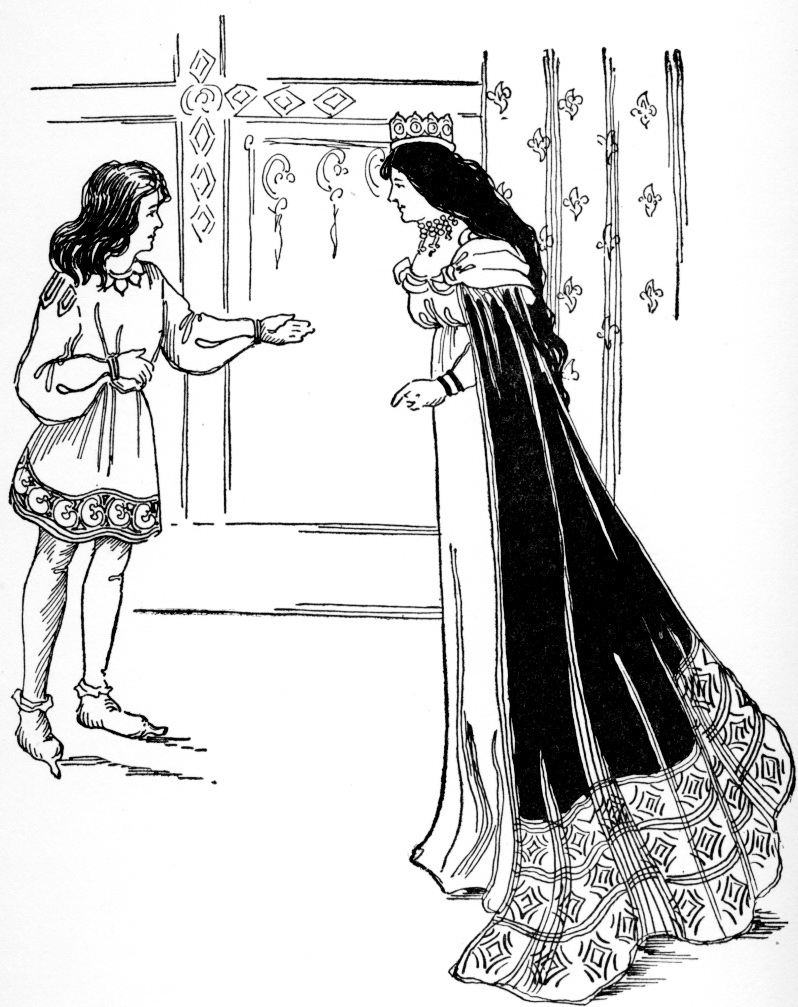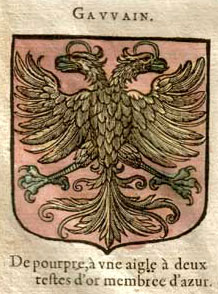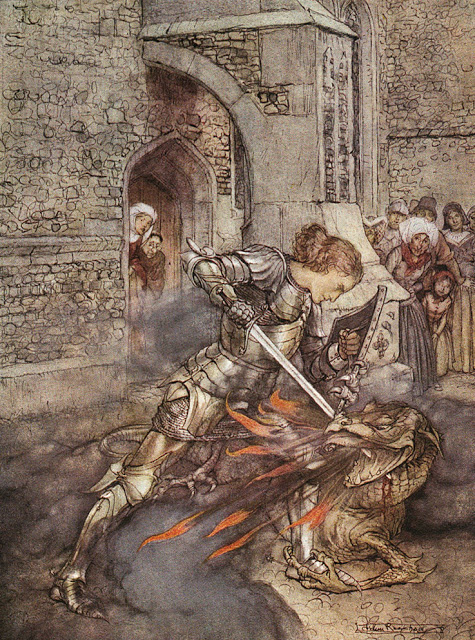|
Agravain
Agravain or Agravaine ( ) is a Knight of the Round Table in Arthurian legend, whose first known appearance is in the works of Chrétien de Troyes. He is the second eldest son of King Lot of Orkney with one of King Arthur's sisters known as Anna or Morgause, thus nephew of King Arthur, and brother to Sir Gawain, Gaheris, and Gareth, as well as half-brother to Mordred. Agravain secretly makes attempts on the life of his hated brother Gaheris starting in the Vulgate Cycle, participates in the slayings of Lamorak and Palamedes in the Post-Vulgate Cycle, and murders Dinadan in the Prose ''Tristan''. In the French prose cycle tradition included in Thomas Malory's ''Le Morte d'Arthur'', together with Mordred, he then plays a leading role by exposing his aunt Guinevere's affair with Lancelot, which leads to his death at Lancelot's hand. In the traditional, albeit contested, division of the massive medieval prose ''Lancelot'' portion of the Vulgate Cycle into three or four parts, the ... [...More Info...] [...Related Items...] OR: [Wikipedia] [Google] [Baidu] |
Gaheris
Gaheris ( ; , ''Gaheriés'', etc.) is a Knight of the Round Table and a relative of King Arthur in the chivalric romance tradition of the Arthurian legend. Usually, Gaheris is the third son of own of Arthur's half-sisters and her husband Lot, the rulers of either Orkney or Lothian. In the popular version from Thomas Malory's ''Le Morte d'Arthur'', Gaheris is a son of King Lot of Orkney and his wife Queen Morgause, as well as a younger brother of Gawain and Agravain, an older brother of Gareth, and a half-brother of Arthur's son Mordred. His figure may have been originally derived from that of Gawain's sole brother present in an early Welsh Arthurian tradition and then later split into a separate character of another brother that is today best known as Malory's Gareth. German medieval poetry, which does not have a 'Gareth' figure, features a distinct version of Gaheris as Gawain's cousin instead of his brother. ''Le Morte d'Arthur'' depicts Gaheris as little more than a suppo ... [...More Info...] [...Related Items...] OR: [Wikipedia] [Google] [Baidu] |
Knights Of The Round Table
The Knights of the Round Table (, , ) are the legendary knights of the fellowship of King Arthur that first appeared in the Matter of Britain literature in the mid-12th century. The Knights are a chivalric order dedicated to ensuring the peace of Arthur's kingdom following an early warring period, entrusted in later years to undergo a mystical quest for the Holy Grail. The Round Table at which they meet is a symbol of the equality of its members, who range from sovereign royals to minor nobles. The various Round Table stories present an assortment of knights from all over Great Britain and abroad, some of whom are even from outside of Europe. Their ranks often include King Arthur's family, Arthur's close and distant relatives, such as Agravain, Gaheris and Yvain, as well as his reconciled former enemies, like Galehaut, Pellinore and King Lot, Lot. Several of the most notable Knights of the Round Table, among them Bedivere, Gawain and Sir Kay, Kay, are based on older characters ... [...More Info...] [...Related Items...] OR: [Wikipedia] [Google] [Baidu] |
Mordred
Mordred or Modred ( or ; Welsh: ''Medraut'' or ''Medrawt'') is a major figure in the legend of King Arthur. The earliest known mention of a possibly historical Medraut is in the Welsh chronicle ''Annales Cambriae'', wherein he and Arthur are ambiguously associated with the Battle of Camlann in a brief entry for the year 537. Medraut's figure seemed to have been regarded positively in the early Welsh tradition and may have been related to that of King Arthur's family, Arthur's son. As Modredus, Mordred was depicted as Arthur's traitorous nephew and a legitimate son of King Lot in the pseudo-historical work ''Historia Regum Britanniae'', which then served as the basis for the subsequent evolution of the legend from the 12th century. Later variants most often characterised Mordred as Arthur's villainous bastard son, born of an incestuous relationship with Morgause, his half-sister, the queen of Lothian or Orkney named either Anna, Orcades, or Morgause. The accounts presented in the ... [...More Info...] [...Related Items...] OR: [Wikipedia] [Google] [Baidu] |
Morgause
Morgause ( ) is a popular variant of the figure of the Queen of Orkney, an Arthurian legend character also known by various other names and appearing in different forms of her archetype. She is the mother of Gawain and often also of Mordred, both key players in the story of her brother King Arthur and his downfall. In the early chronicles and romances based on or inspired by Geoffrey of Monmouth, as well as in the Welsh tradition, her figure and role are commonly that of Gawain's mother, and she is either a full or half sister to Arthur. In most cases, she is the wife or widow of King Lot, ruling over either Orkney or Lothian. However, her name varies widely between texts, as does the issue of her children other than Gawain, and Mordred's own parentage is often only presumed rather than stated. In a later popular tradition, Mordred becomes the offspring of Arthur's own accidental incest with his estranged half-sister, whom Thomas Malory's seminal ''Le Morte d'Arthur'' calls ... [...More Info...] [...Related Items...] OR: [Wikipedia] [Google] [Baidu] |
Gareth
Gareth (; Old French: ''Guerehet'', ''Guerrehet'', etc.) is a Knights of the Round Table">Knight of the Round Table in Arthurian legend. He is the youngest son of King Lot and Morgause, Queen Morgause, King Arthur's half-sister, thus making him Arthur's nephew, as well as brother to Gawain, Agravain and Gaheris, and either a brother or half-brother of Mordred. Gareth is particularly notable in ''Le Morte d'Arthur'', where one of its eight books is named after and largely dedicated to him, and in which he is also known by his nickname Beaumains. Arthurian legend French literature The earliest role of Gareth, appearing as Guerrehet, is found in the First Continuation of Chrétien de Troyes's '' Perceval ou le Conte du Graal'' (in the original ''Perceval'', Chrétien himself had only mentioned Gawain's brothers named Agrevain, Gaherriez and Guerrehés). As the protagonist of the story's final episode, he slays the giant known as "Little Knight", thus avenging the death of fai ... [...More Info...] [...Related Items...] OR: [Wikipedia] [Google] [Baidu] |
Gawain
Gawain ( ), also known in many other forms and spellings, is a character in Matter of Britain, Arthurian legend, in which he is King Arthur's nephew and one of the premier Knights of the Round Table. The prototype of Gawain is mentioned under the name Gwalchmei in the earliest Welsh sources. He has subsequently appeared in many Arthurian tales in Welsh, Latin, French, English, Scottish, Dutch, German, Spanish, and Italian, notably as the protagonist of the Middle English poem ''Sir Gawain and the Green Knight''. Other works featuring Gawain as their central character include ''De Ortu Waluuanii'', ''Diu Crône'', ''Ywain and Gawain'', ''Golagros and Gawane'', ''Sir Gawain and the Carle of Carlisle'', ''L'âtre périlleux'', ''La Mule sans frein'', ''La Vengeance Raguidel'', ''Le Chevalier à l'épée'', ''Vulgate Cycle, Le Livre d'Artus'', ''The Awntyrs off Arthure'', ''The Greene Knight'', and ''The Wedding of Sir Gawain and Dame Ragnelle, The Weddynge of Syr Gawen and Dame ... [...More Info...] [...Related Items...] OR: [Wikipedia] [Google] [Baidu] |
Lancelot
Lancelot du Lac (French for Lancelot of the Lake), alternatively written as Launcelot and other variants, is a popular character in the Matter of Britain, Arthurian legend's chivalric romance tradition. He is typically depicted as King Arthur's close companion and one of the greatest Knights of the Round Table, as well as a secret lover of Arthur's wife, Guinevere. In his most prominent and complete depiction, Lancelot is a beautiful orphaned son of King Ban of the lost kingdom of Benoïc. He is raised in a fairy realm by the Lady of the Lake while unaware of his real parentage prior to joining Arthur's court as a young knight and discovering his origins. A hero of many battles, quests and tournaments, and famed as a nearly unrivalled Swordsmanship, swordsman and Jousting, jouster, Lancelot soon becomes the lord of the castle Joyous Gard and personal champion of Queen Guinevere, to whom he is devoted absolutely. He also develops a close relationship with Galehaut and suffers ... [...More Info...] [...Related Items...] OR: [Wikipedia] [Google] [Baidu] |
King Lot
King Lot , also spelled Loth or Lott (Lleu or Llew in Welsh), is a British monarch in Arthurian legend. He was introduced in Geoffrey of Monmouth's pseudohistorical ''Historia Regum Britanniae'' (c. 1136) as King Arthur's brother-in-law, who serves as regent of Britain between the reigns of Uther Pendragon and Arthur. He has appeared regularly in works of chivalric romance, alternating between the roles of Arthur's enemy and ally, and is often depicted as the ruler of Lothian and either Norway or Orkney. His literary character is probably derived from hagiographical material concerning Saint Kentigern, which features Leudonus as king of Leudonia (the Latin name for Lothian) and father of Saint Teneu. Lot is generally portrayed as the husband of Arthur's sister or half-sister known by many names but most often as Anna, Gwyar, or variants of Morgause. The number and names of their children vary depending on the source, but usually they prominently include Gawain as well as ot ... [...More Info...] [...Related Items...] OR: [Wikipedia] [Google] [Baidu] |
Vulgate Cycle
The ''Lancelot-Grail Cycle'', also known as the Vulgate Cycle or the Pseudo-Map Cycle, is an early 13th-century French Arthurian literary cycle consisting of interconnected prose episodes of chivalric romance originally written in Old French. The work of unknown authorship, presenting itself as a chronicle of actual events, retells the legend of King Arthur by focusing on the love affair between Lancelot and Guinevere, the religious quest for the Holy Grail, and the life of Merlin. The highly influential cycle expands on Robert de Boron's "Little Grail Cycle" and the works of Chrétien de Troyes, previously unrelated to each other. It does that by supplementing them with additional details and side stories, as well as lengthy continuations, while tying the entire narrative together into a coherent single tale. There is no unity of place within the narrative, but most of the episodes take place in Arthur's kingdom of Logres. One of the main characters is Arthur himself, around wh ... [...More Info...] [...Related Items...] OR: [Wikipedia] [Google] [Baidu] |
Le Morte D'Arthur
' (originally written as '; Anglo-Norman French for "The Death of Arthur") is a 15th-century Middle English prose reworking by Sir Thomas Malory of tales about the legendary King Arthur, Guinevere, Lancelot, Merlin and the Knights of the Round Table, along with their respective folklore. In order to tell a "complete" story of Arthur from his conception to his death, Malory compiled, rearranged, interpreted and modified material from various French and English sources. Today, this is one of the best-known works of Arthurian literature. Many authors since the 19th-century revival of the legend have used Malory as their principal source. Apparently written in prison at the end of the medieval English era, ''Le Morte d'Arthur'' was completed by Malory around 1470 and was first published in a printed edition in 1485 by William Caxton. Until the discovery of the Winchester Manuscript in 1934, the 1485 edition was considered the earliest known text of ''Le Morte d'Arthur'' an ... [...More Info...] [...Related Items...] OR: [Wikipedia] [Google] [Baidu] |
Guinevere
Guinevere ( ; ; , ), also often written in Modern English as Guenevere or Guenever, was, according to Arthurian legend, an early-medieval queen of Great Britain and the wife of King Arthur. First mentioned in literature in the early 12th century, nearly 700 years after the purported times of Arthur, Guinevere has since been portrayed as everything from a fatally flawed, villainous, and opportunistic traitor to a noble and virtuous lady. The variably told motif of abduction of Guinevere, or of her being rescued from some other peril, features recurrently and prominently in many versions of the legend. The earliest datable appearance of Guinevere is in Geoffrey of Monmouth's pseudo-historical British chronicle ''Historia Regum Britanniae'', in which she is seduced by Mordred during his ill-fated rebellion against Arthur. In a later medieval Arthurian romance tradition from France, a major story arc is the queen's tragic love affair with her husband's best knight and trusted f ... [...More Info...] [...Related Items...] OR: [Wikipedia] [Google] [Baidu] |
Lamorak
Lamorak (or ''Lamorake'', ''Lamorac ', ''Lamerak'', ''Lamero e'', '' maratto'', ''Amorotto'', and other spellings) de Galis (of Wales) is a Knight of the Round Table in the Arthurian legend. Originally known as Lamorat le Gallois (''Lamourat'') in French, he was introduced in the Prose ''Tristan'' as a son of King Pellinore. Another Lamorat ( de Listenois) appears in only one romance as his father's brother. In his English compilation ''Le Morte d'Arthur'', Thomas Malory refers to him as King Arthur's third best knight, only inferior to Lancelot and Tristan, while the Prose ''Tristan'' names his as one of the top five. Nevertheless, Lamorak was not exceptionally popular in the chivalric romance tradition, confined to the cyclical material and subordinate to more prominent characters. Today, he is best known for his tragic love affair with Arthur's sister, the Queen of Orkney ( Morgause in Malory), resulting in their deaths. Legend Lamorak is one of the sons of King Pe ... [...More Info...] [...Related Items...] OR: [Wikipedia] [Google] [Baidu] |











